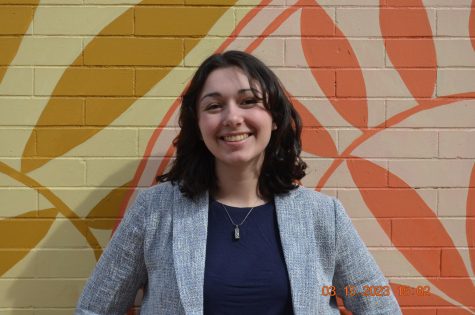Every year, Quad City schools spend the months of October and November raising non-perishable food and monetary donations for the Student Hunger Drive. Though designed as a friendly rivalry between schools, the impact the Student Hunger Drive has on local families extends far beyond a simple competition.
The work of the River Bend Food Bank helps the one in seven children and one in 10 adults who face food insecurity every day, along with the 62% forced to choose between paying rent/mortgage or food.
At a school like Pleasant Valley, where such issues are foreign to the great majority of the population, it can be hard to picture the impact the River Bend Food Bank has on community members. But one student uses the Student Hunger Drive to remember those who helped at her family’s darkest hour.
Not seeking recognition or acknowledgment, senior Yesenia Stoddard has donated over $600—the equivalent of 900 pounds of food—to the Student Hunger Drive.
In the days leading up to the start of 7th grade, a normal Saturday night became Stoddard’s living nightmare. In the quiet hush of the evening, her apartment complex caught ablaze and burned down. An upstairs neighbor had a propane tank grill that exploded, leaving nothing in Stoddard’s home salvageable.
The materialistic norms of everyday life that so many take for granted became a distant dream for Stoddard, whether it be a hair-tie to put up hair in the morning, a closet full of clothes to assemble an outfit or the comfort of lying on one’s own bed.
Stoddard’s personal belongings compiled into a minuscule list: a travel-sized toothpaste from the Red Cross, a pair of outgrown shorts and a faded sweatshirt. “I did not have shoes. I did not have a toothbrush. That night I stayed at a hotel and as soon as that door opened I was ready to fall asleep,” Stoddard recounted. “I prayed that, if I fell asleep, the dream would be over, I’d have my home back, I’d have my little stuffed animals and my favorite pen. Much to my dismay it was not a dream.”
Forever ingrained into Stoddard’s memory is the feeling of getting ready for bed that first night: the longing to strip off her soot-filled clothes, cuddle up in a soft sweatshirt and feel clean with brushed hair and teeth—none of which was possible. “I cannot describe it in any way other than emptiness. I brushed my hair with a borrowed brush from a girl in the locker room and another girl would braid my hair so it would knot less often,” Stoddard said.
She spent her next few weeks navigating her new reality. The only shoes Stoddard had were a pair of donated hunting shoes three sizes too big, and she was unable to get another pair for six weeks. Stoddard recalls a cafeteria worker giving her extra bags of kettle corn and rice krispy treats, even after the snack bar was closed, because food where she was staying was not guaranteed.
Because of the nature of the Student Hunger Drive, it can be easy to get lost in the competition aspect and lose sight of the true value of the hunger drive. Class incentives and the promise of “Chick-fil-A Day” spur donations for external reasons, but it is rare for students to donate from the goodness of their hearts.
Journalism adviser and English teacher Maureen Dyer has watched as Stoddard silently donates behind the scenes, always without the motivation of incentives or recognition. “Yesenia gives so graciously and humbly. She doesn’t want any recognition or incentive. She simply gives,” Dyer noted. “It’s so incredibly genuine and selfless.”
Those hoping to meet the hunger drive’s lofty goal of raising 100,000 pounds of food can only hope Stoddard’s generosity is contagious around the halls of Pleasant Valley.
As a former teacher in the Davenport School District, Dyer recognizes the importance that the Student Hunger Drive has on the lives of students. “I always tell [current] students my ‘why’ at the start of the hunger drive to encourage giving. The majority of the students in my former school were below the poverty level,” she said. “It’s important for students at our school to know how many impoverished children live locally and benefit from programs like the Student Hunger Drive.”
This ‘why’ is the reason Stoddard’s story and actions are so impactful. Stoddard’s experiences became her ‘why,’ and while heartbreaking, it also serves as a beacon of hope.
As the final weeks of the Student Hunger Drive approach, Stoddard’s story serves as an important reminder about the purpose of the hunger drive. She has single-handedly donated the equivalent of over 2,000 meals.
“A handful of years ago, the number of possessions she called her own were fewer than the fingers on my hands,” Dyer said. “Now, before she has even become a legal adult, she remembers her time of need and chooses to give back. She is truly remarkable.”









